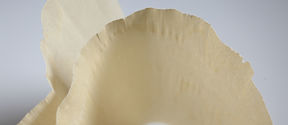Luana Dessbesell began her professorship at Aalto University School of Chemical Engineering in February 2023. Originally from Brazil, she has in recent years worked as researcher and forest engineer in Ontario and Quebec, Canada.
Dessbesell says she had no plans to move out of Canada. However, she came across a LinkedIn post on a professorship at Aalto University that seemed tailor-made for her.
“I always keep a close eye on the leading institutions in forestry and chemical engineering in the forest sector, so I knew of Aalto. I had only met one professor, Orlando Rojas, who had worked there. And I thought that if someone like him worked there, Aalto must be a great place. Orlando heartily recommended Aalto and told me I would love it there”, Dessbesell says.
Besides work, Dessbesell was drawn to the lifestyle that living in Finland would offer her family. It is feasible to live relatively close to the Aalto campus and the city of Helsinki, while simultaneously being surrounded by forests and opportunities for outdoors activities.
“In the larger Canadian cities, 40 minutes away from campus is considered close, and you’re still within the confines of the city. I enjoy the fact that in Finland, I can practically live in a forest and be on campus in 30 minutes”, Dessbesell says.
Working with the rhythms of nature
Dessbesell’s research group uses sustainability assessments and methods to measure the potential of emerging innovations that are coming from forest residues. The group takes a “soil-to-soil” approach in their work, meaning that bioproducts are assessed from their conception to the end-of-life stage in a circular fashion. Even after hundreds of recycles, everything returns to earth in some form.
“Our job is to try to understand, from an engineering viewpoint, what it takes to use trees to design something that not only meets the technical requirements but is also economically feasible, and that can have significant potential environmental benefits”, says Dessbesell.
Dessbesell points out that working with nature is inherently unpredictable – the researchers cannot have control over every parameter. Polymers taken from fossil sources might have been optimized over the course of hundreds of years, whereas any process that uses biomass must work within natural constraints.
“Nature has made this beautiful thing, the tree, which contains polymers like lignin, cellulose, and hemicellulose. But we are breaking them down and creating new polymers, new chemicals. Any little change in, for instance, the harvesting season, on the feedstock, on the trees themselves can change the quality of the process”, says Dessbesell.






